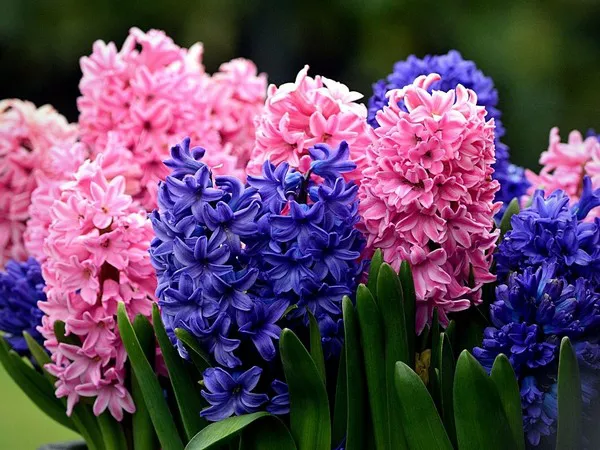In the realm of botany and horticulture, one of the most captivating aspects of flowers is their alluring fragrance. From the delicate aroma of roses to the intoxicating scent of jasmine, floral fragrances have enchanted humans for centuries. But what exactly causes flowers to emit such delightful scents? The answer lies in a complex interplay of chemistry and biology, where a myriad of compounds work together to create the signature fragrances we associate with different flowers.
The Role of Volatile Organic Compounds
At the heart of a flower’s scent are volatile organic compounds (VOCs). These are small molecules that readily evaporate into the air, allowing us to perceive them as fragrances. VOCs are synthesized within various parts of the flower, including the petals, stamens, and pistils, and their production is influenced by factors such as genetics, environmental conditions, and the flower’s stage of development.
Among the most common types of VOCs found in flower scents are terpenoids, phenylpropanoids, and benzenoids. Terpenoids, for example, are derived from isoprene units and contribute to the fresh, citrusy scents of flowers like lemons and oranges. Phenylpropanoids, on the other hand, are responsible for the sweet, floral fragrances found in roses and lilies. Benzenoids, which include compounds like benzaldehyde and vanillin, impart a wide range of aromas, from the almond-like scent of cherry blossoms to the vanilla-like fragrance of orchids.
Biosynthesis of Floral Scents
The production of VOCs in flowers is orchestrated by a series of biochemical pathways that involve enzymes, substrates, and cofactors. These pathways begin with the synthesis of precursor molecules, such as amino acids, fatty acids, and carbohydrates, which are then transformed into specific VOCs through a sequence of enzymatic reactions.
For instance, the biosynthesis of terpenoids often starts with the condensation of isopentenyl diphosphate (IPP) and dimethylallyl diphosphate (DMAPP) to form geranyl diphosphate (GPP), a key intermediate in the production of various terpenoid compounds. This process is catalyzed by enzymes called prenyltransferases. Subsequent modifications of GPP lead to the formation of diverse terpenoid molecules, each with its own unique scent profile.
Similarly, phenylpropanoids are synthesized from phenylalanine, an amino acid obtained through the shikimate pathway. Enzymes such as phenylalanine ammonia-lyase (PAL) and cinnamate 4-hydroxylase (C4H) convert phenylalanine into cinnamic acid, which serves as a precursor for numerous phenylpropanoid compounds, including those responsible for the characteristic fragrance of flowers like roses and carnations.
Environmental Influences on Flower Scents
While the biochemical pathways underlying floral scent production are genetically determined, environmental factors play a crucial role in shaping the final composition and intensity of flower fragrances. Light, temperature, humidity, soil composition, and pollinator activity are just a few of the variables that can influence the synthesis and release of VOCs in flowers.
For example, studies have shown that exposure to different light wavelengths can affect the expression of genes involved in floral scent biosynthesis. In some cases, flowers grown under specific light conditions may produce higher levels of certain VOCs, leading to variations in fragrance intensity and quality.
Temperature also plays a significant role in regulating floral scent emission. Warmer temperatures generally enhance the volatilization of VOCs, resulting in stronger and more noticeable fragrances. Conversely, cooler temperatures may slow down scent release, leading to a subtler olfactory experience.
Humidity levels can impact flower scents by affecting the rate of evaporation of VOCs from the flower’s surface. In dry environments, VOCs may evaporate more quickly, intensifying the fragrance perceived by nearby organisms. In contrast, high humidity can dampen scent emissions, reducing their dispersal and potentially altering pollinator behavior.
The Evolutionary Significance of Flower Scents
The production of fragrant compounds in flowers has profound evolutionary implications, particularly in the context of plant-pollinator interactions. Floral scents serve as chemical signals that attract pollinators, such as bees, butterflies, and birds, to the flowers, facilitating the transfer of pollen and ensuring reproductive success.
Each flower species has evolved its own unique scent profile tailored to attract specific pollinators. For example, flowers pollinated by bees often emit fruity or sweet fragrances, while those pollinated by moths may produce musky or nocturnal scents. This coevolutionary relationship between flowers and their pollinators has led to the diversification of floral scents across different plant species and ecosystems.
In addition to attracting pollinators, floral scents may also play a role in repelling herbivores and pathogens. Some volatile compounds emitted by flowers possess antimicrobial or insecticidal properties, helping to protect the plant from microbial infections and herbivore damage.
Applications in Perfumery and Aromatherapy
Beyond their ecological significance, flower scents have captivated humans for millennia and have been used for various cultural, aesthetic, and therapeutic purposes. Perfumery, in particular, relies heavily on floral essences to create a wide range of fragrances, from light and airy to rich and exotic.
The art of perfume making involves extracting and distilling aromatic compounds from flowers and other botanical sources to create complex and harmonious scent compositions. Perfumers carefully blend different floral notes with other aromatic ingredients, such as woods, resins, and spices, to achieve desired olfactory effects.
In addition to perfumery, flower scents are also valued for their therapeutic properties in aromatherapy. Certain floral essences, such as lavender, rose, and chamomile, are believed to have calming, uplifting, or mood-enhancing effects when inhaled or applied topically. These natural fragrances are often used in aromatherapeutic practices to promote relaxation, relieve stress, and improve overall well-being.
Conclusion
The enchanting fragrances of flowers are a testament to the intricate interplay of chemistry, biology, and ecology that governs the natural world. From the biosynthesis of volatile organic compounds to their role in plant-pollinator interactions and human culture, floral scents hold a special place in both science and society. By unraveling the mysteries of flower fragrances, we gain a deeper appreciation for the beauty and complexity of the botanical realm.


